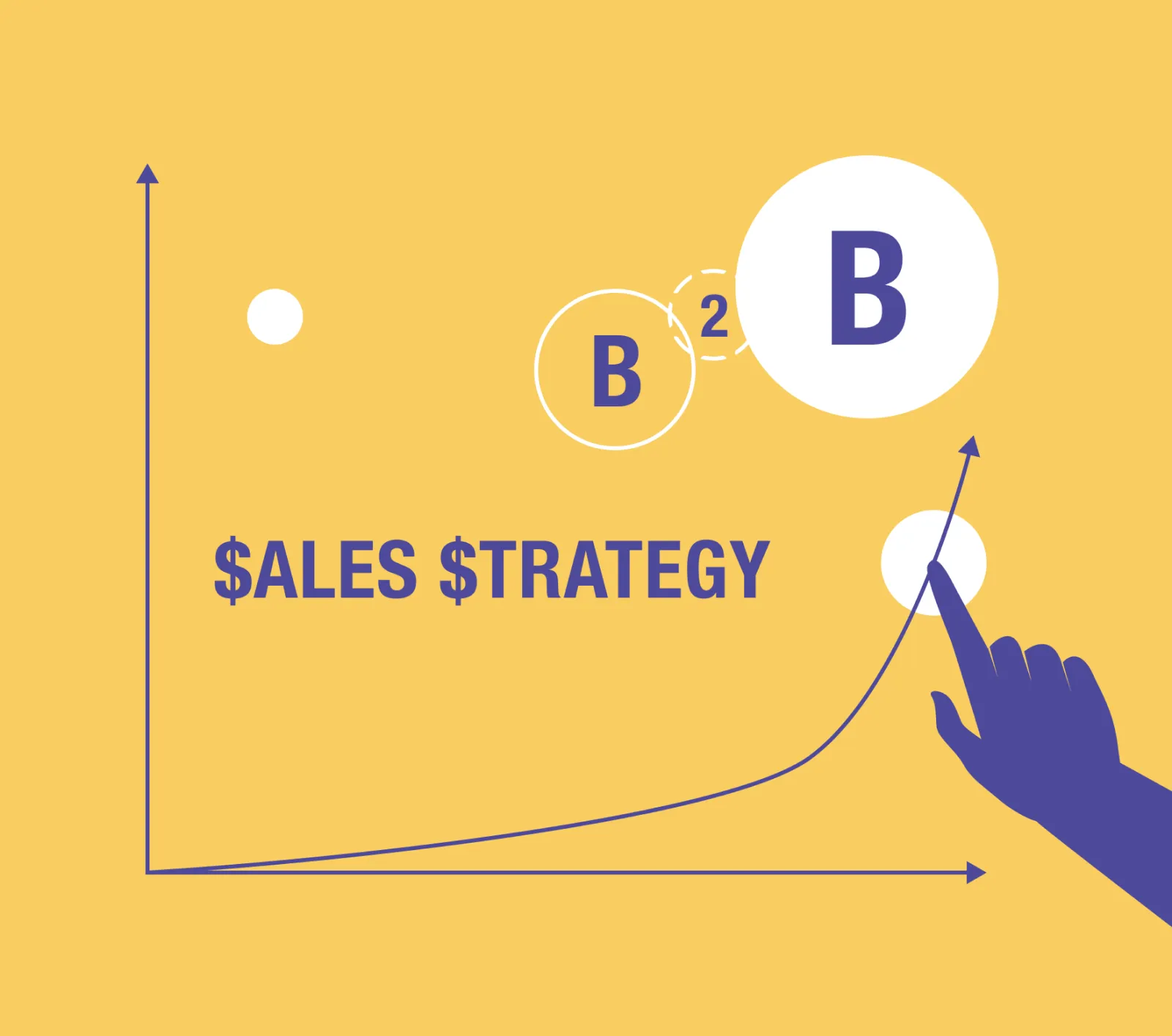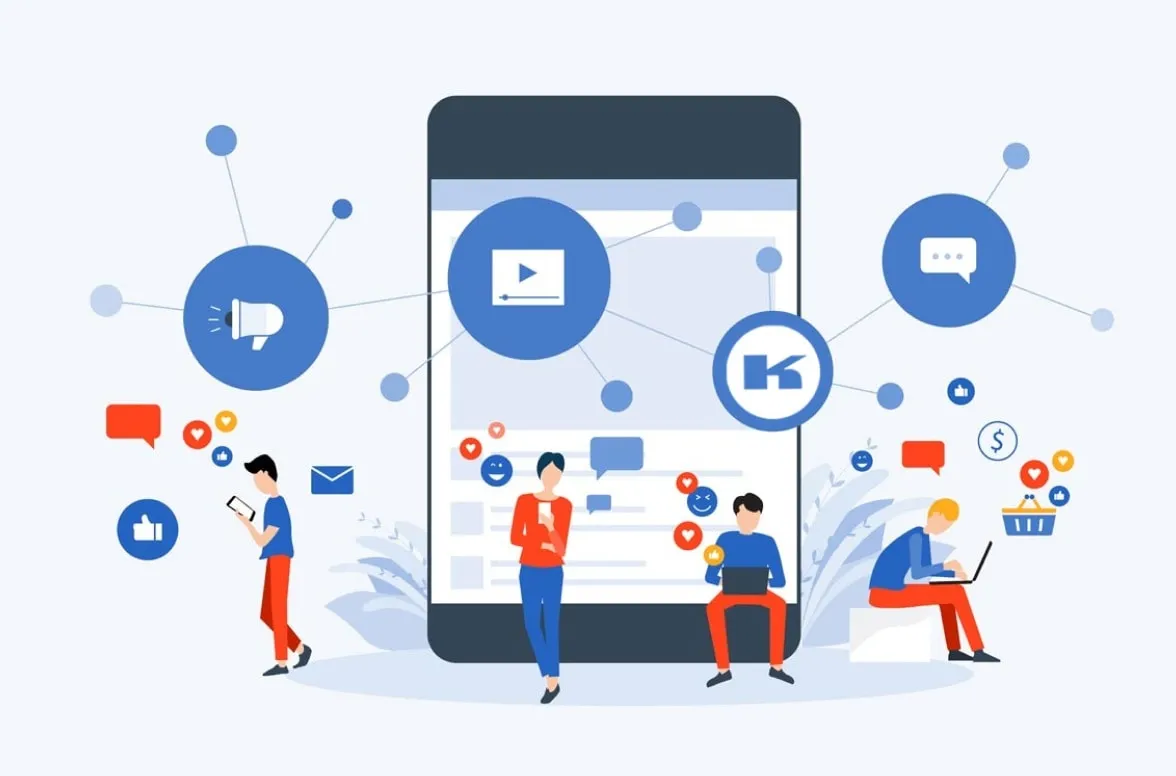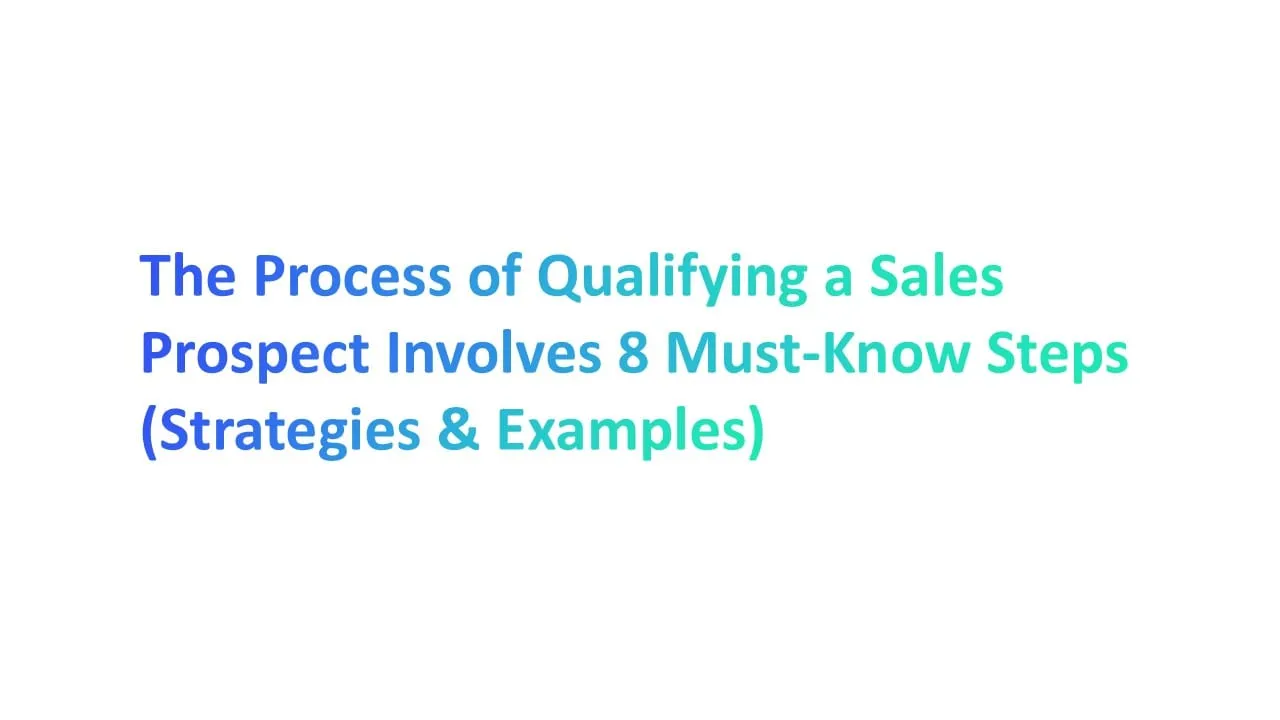B2B sales is evolving fast, and competition is tougher than ever. If you want to close high-value deals, you need proven strategies that work.
Did you know that 77% of B2B buyers say their last purchase was complex or difficult (Forrester)? That means your sales approach needs to be strategic, data-driven, and customer-focused.
This guide breaks down 15 actionable B2B sales strategies that help sales teams navigate long sales cycles, engage decision-makers, and turn prospects into paying customers.
You’ll learn how to personalize outreach, leverage data insights, and use automation to streamline the sales process.
Whether you're a seasoned sales professional or just refining your sales strategy, these tactics will give you an edge.
What is B2B Sales?

B2B sales, or business-to-business sales, is when one business sells products or services to another business. It's different from business-to-consumer sales, where businesses sell directly to consumers. B2B sales are often larger in volume and involve more complex transactions.
In B2B sales, it’s common to deal with multiple decision makers. Sales reps must address the concerns of each stakeholder to close deals effectively.
Engaging with key decision makers within the prospect company is critical for closing deals. Sales reps should identify and build relationships with these individuals to influence the buying process.
The Sales Process
In B2B sales, the sales process involves multiple steps and can take a longer time. Companies need to identify their target customers, which are other businesses that might benefit from their products or services. Below are the key steps one should follow:
- Lead Generation: Generating leads is the first step in the sales process. Effective lead generation strategies, such as content marketing and SEO, attract potential customers and fill the sales funnel.
- Qualification: Sales reps determine if these potential customers, or leads, have the need and budget for their product.
- Presentation: Here, sales teams showcase their product or service to the decision makers in the target company. They might use a sales pitch or demo to explain how their product can solve the prospect’s pain points.
- Handling Objections: Prospective customers might have concerns or questions. Sales reps must address these issues to move closer to a sale.
- Closing the Deal: This is the final step where the sales team negotiates terms and finalizes the sale.
15 Effective B2B Sales Strategies

1. Personalized Outreach
Personalized outreach is a key B2B sales strategy. This means tailoring your messages to each potential customer. Personalized outreach shows potential customers that you care about their specific needs. This builds trust and increases the chances of closing deals.
Creating detailed buyer personas allows sales and marketing teams to understand the needs and preferences of their target customers. This information guides the development of personalized sales pitches and marketing messages.
Here’s how to do it:
- Research: Use market research to learn about your target customers. Find out what they need and what challenges they face.
- Customize Messages: Address the customer by name and mention specific issues they have. Show that you understand their business.
- Use Data: Use data to personalize your sales pitch. For example, “I see that your company has been growing rapidly. Our software can help you manage this growth more effectively.”
Epsilon found that 80% of consumers are more likely to have multiple key decision makers make a purchase when brands offer personalized experiences.Struggling with outreach at scale?
Alore’s Drip Campaigner automates emails, personalizes messages, and tracks engagement effortlessly. Sign Up Now!
2. Leverage Social Media
Social media is a powerful tool for B2B sales. It helps you connect with potential customers and share valuable content.
Here’s how to leverage it effectively:
- Choose the Right Platforms: Focus on platforms where your target customers are active. LinkedIn is great for B2B sales.
- Share Content: Post useful content regularly. Share articles, videos, and infographics that address your customers' pain points.
- Engage: Respond to comments and messages quickly. Join industry groups and participate in discussions.
Using social media helps you stay top of mind with potential buyers and current customers. It also allows you to showcase your expertise and build relationships.A study by Sprout Social found that 78% of consumers are willing to buy from a company after having a positive experience with them on social media.
3. Use Data-Driven Insights
Data-driven insights are crucial for improving your B2B sales process. They help you understand what works and what doesn’t.
Here’s how to use data effectively:
- Collect Data: Track your sales activities and results. Use tools like CRM software to gather data on your sales cycle, customer interactions, and sales performance.
- Analyze Data: Look for patterns and trends. Identify which sales tactics are most effective.
- Make Data-Driven Decisions: Use your insights to refine your sales strategy. For example, if data shows that personalized emails have a high response rate, focus more on this tactic.
By using data-driven insights, you can make informed decisions about business priorities and technology solutions that enhance your sales efforts. This leads to better results and more successful business-to-business sales.Companies that utilize data-driven marketing are six times more likely to achieve annual profitability, according to Forbes.
4. Build Strong Relationships
Building strong relationships is crucial for successful B2B sales strategies.
Here’s how to do it:
- Be Trustworthy: Always be honest and keep your promises. Trust is the foundation of any strong relationship.
- Communicate Regularly: Stay in touch with your customers. Send updates, check in to see how they are doing, and be available when they need help.
- Show Appreciation: Thank your customers for their business. A simple thank you can go a long way in making them feel valued.
Nurturing customer relationships leads to long-term success. Sales reps should engage with customers regularly to ensure satisfaction and identify opportunities for upselling or cross-selling.Example: A study by Gallup found that in B2B sales, customers who are fully engaged bring 23% more revenue than average customers.
5. Implement Account-Based Marketing (ABM)
Account-Based Marketing (ABM) focuses on targeting specific businesses that are the best fit for your product or service.
Here’s how to implement it:
- Identify Target Accounts: Use market research to find companies that would benefit the most from your product.
- Personalize Marketing Efforts: Create personalized marketing messages for each target company. For instance, mention how your product can solve their specific pain points.
- Align Sales and Marketing Teams: Make sure your sales and marketing teams work together. This helps create a seamless experience for the customer.
According to SiriusDecisions, companies with aligned sales and marketing teams achieve 24% faster growth rates and 27% faster profit growth.\
6. Provide Value-Added Content
Providing value-added content is an effective way to attract and retain customers.
Here’s how to do it:
- Create Useful Content: Write blog posts, create videos, or design infographics that address common customer questions and problems.
- Share Case Studies: Show real-life examples of how your product helped other businesses. This builds credibility and trust.
- Offer Free Resources: Provide free tools, templates, or guides that your customers can use.
Example: HubSpot found that companies that blog generate 67% more qualified leads, than those that don’t.
7. Optimize Your Sales Funnel
Optimizing your sales funnel is key to effective B2B sales strategies. A sales funnel guides potential customers from initial interest to becoming loyal customers.
Here’s how to optimize it:
- Attract Potential Customers: Use strong marketing efforts like email campaigns, social media, and content marketing to draw in potential customers.
- Engage Them: Provide valuable information that addresses their pain points and questions.
- Convert Leads: Offer free trials or demos to turn interested prospects into paying customers.
- Retain Customers: Check in with existing customers regularly, offer support, and ask for feedback to keep them satisfied and encourage repeat business.
8. Offer Free Trials or Demos
Offering free trials or demos is a powerful B2B sales tactic. It allows potential customers to experience your product before committing to a purchase.
Here’s why and how to do it:
- Build Trust: Free trials show confidence in your product and help build trust with potential customers.
- Provide Support: During the trial, offer support to answer questions and solve problems. This demonstrates your commitment to customer satisfaction.
- Gather Feedback: Use this period to collect feedback and understand what users like or dislike, helping you improve your product.
Example: If you offer software, let businesses use it for a month for free. During this time, help them understand its benefits and how it solves their problems.
9. Engage in Consultative Selling
Consultative selling involves acting as a trusted advisor rather than just a salesperson. This approach focuses on understanding and solving the customer's specific needs.
Here’s how to do it effectively:
- Ask Questions: Start by asking about their business challenges and needs.
- Listen Actively: Show that you understand their problems by actively listening.
- Provide Data and Examples: Use case studies and statistics to demonstrate how your product has helped other businesses. For example, "Our software reduced the sales cycle by 20% for Company X."
- Collaborate on Solutions: Work with the customer to find the best solution, building a strong relationship and making them feel valued.
10. Utilize Referral Programs
Referral programs can improve your B2B sales strategies. When your existing customers refer others, it builds trust.
Here’s how to set up a referral program:
- Create Incentives: Offer rewards for successful referrals. This could be discounts, free products, or gift cards.
- Make It Easy: Provide a simple way for customers to refer others. This could be a link they can share or a form they can fill out.
- Promote the Program: Let your customers know about the referral program. Use emails, social media, and your website to spread the word.
Example: Dropbox used a referral program to grow its user base by 3900% in 15 months. They offered extra storage space as a reward for referrals.
11. Invest in Sales Training
Investing in sales training is essential for improving your sales process. Well-trained sales reps are more effective and confident.
Here’s how to do it:
- Identify Needs: Find out what skills your sales team needs to improve. This could be negotiation, communication, or product knowledge.
- Choose Training Programs: Select training programs that fit your team’s needs. There are many online courses and workshops available.
- Measure Results: Track the progress of your sales reps after training. Look for improvements in their performance and sales numbers.
According to Sales Performance International, companies that invest in sales training see an average of 29% increase in sales.
12. Implement Lead Scoring
Lead scoring helps you prioritize potential customers based on their likelihood to buy. This makes your sales efforts more efficient.
Here’s how to implement lead scoring:
- Define Criteria: Decide what makes a lead valuable. This could include job title, company size, or engagement with your content.
- Assign Scores: Give points for each criterion. For example, a decision maker might get more points than an intern.
- Use Tools: Use CRM software to automate lead scoring. This helps you keep track of leads and their scores.
Example: HubSpot found that companies using lead scoring see a 77% increase in lead generation ROI.
13. Leverage AI and Automation
Using AI and automation can make your sales process more efficient.
Here’s how:
- Automate Repetitive Tasks: Use tools to handle tasks like email marketing, data entry, and scheduling. This frees up your sales reps to focus on more important tasks.
- Analyze Data: AI can help you understand customer behavior and preferences. Use this data to tailor your sales strategies.
- Improve Customer Service: Chatbots can provide instant responses to customer inquiries, improving their experience.
Example: Companies using AI for sales saw a 50% increase in leads and appointments, according to Salesforce.AI-powered sales automation is the future. With Alore, you can schedule emails, track responses, and engage with leads automatically—while focusing on selling! Try Alore’s AI-Driven Tools Now.
14. Develop Strategic Partnerships
Strategic partnerships can expand your reach and open new markets.
Here’s how to develop them:
- Identify Potential Partners: Look for businesses that complement your products or services.
- Create Mutual Benefits: Ensure both parties benefit from the partnership. This could be through shared resources, co-marketing efforts, or joint ventures.
- Maintain Strong Relationships: Regularly communicate with your partners to keep the relationship strong.
Example: Starbucks partnered with Barnes & Noble to open cafes in bookstores, benefiting both companies by attracting more customers.
15. Focus on Customer Retention
Keeping existing customers is often easier and cheaper than acquiring new ones. Focusing on retaining own customers is as important as acquiring new ones. Loyal customers provide repeat business and can become advocates for the brand.
Here’s how to focus on customer retention:
- Provide Excellent Customer Service: Respond quickly to inquiries and resolve issues efficiently.
- Offer Loyalty Programs: Reward your loyal customers with discounts, special offers, or exclusive access to new products.
- Stay Connected: Regularly check in with your customers through emails, calls, or meetings.
Leveraging the existing customer base for referrals and repeat business is a cost-effective way to grow sales. Satisfied customers are likely to recommend the company to others. Example: A study by Bain & Company shows that increasing customer retention rates by 5% can increase profits by 25% to 95%.
Benefits of Using Sales Strategy

1. Increased Revenue
A good sales strategy can help you make more money. When your sales reps know what to do, they can sell more products or professional services.
Defining the ideal buyer persona helps in creating targeted marketing strategies. It ensures that marketing efforts resonate with the right audience, leading to higher conversion rates.
- Higher Revenue Growth: Companies that follow a clear sales process see 28% higher revenue growth than those that don’t, according to a study by Harvard Business Review.
- Effective Sales Tactics: Using effective sales tactics helps sales teams close more deals and increase revenue.
2. Better Alignment with Business Goals
A sales strategy ensures that your sales marketing team, business goals and sales buyer's customer journey too, are aligned. This means everyone on sales journey works towards the same objectives.
- Team Collaboration: When sales and marketing teams collaborate, they create better plans to reach your target market.
- Achieve Goals Faster: Alignment helps in achieving your business goals more quickly and efficiently.
3. Higher Customer Satisfaction
With a clear sales strategy, your sales reps can provide better service to customers. They know how to make sales call to handle different situations and meet customer needs.
- Repeat Purchases: Happy customers are more likely to buy again and tell others about your business. According to HubSpot, 93% of customers are likely to make repeat purchases with companies that offer excellent customer service.
- Positive Feedback: Providing good service leads to positive customer feedback and reviews.
4. Increased Efficiency and Productivity
A sales strategy helps your team work more efficiently. By following a set process, they spend less time figuring out what to do next.
- Save Time: Automating routine tasks like data entry saves time and reduces errors.
- Focus on Selling: Sales reps can focus more on selling and less on administrative tasks, shortening the sales cycle.
5. Predictable Growth
With a solid sales strategy, you can predict your sales growth more accurately. This is because you have a clear understanding of what works and what doesn’t.
- Track Sales Efforts: Tracking your sales efforts helps you see patterns and trends.
- Plan for the Future: This makes it easier to plan for future sales and set realistic goals.
6. Better Risk Management
A sales strategy also helps in managing risks. By analyzing data and market research, you can identify potential challenges early.
- Avoid Mistakes: Knowing the pain points of your prospective customers can help you tailor your sales pitch and avoid common objections.
- Informed Decisions: Use data to make informed decisions and mitigate risks.
Role of Sales Reps in B2B Sales Strategy

1. Identifying and Qualifying Leads
Identifying and qualifying leads is one of the most important tasks for sales rep.
Here’s how they do it:
- Research Potential Customers: Sales reps use market research to find potential customers who might need their products or services. They look for companies that fit their target market.
- Qualify Leads: Not all leads are the same. Sales reps evaluate if the lead has the potential to become a customer. They consider factors like budget, needs, and decision-making power.
- Use Tools: Many sales reps use tools like CRM (Customer Relationship Management) software to keep track of leads and their qualifications.
2. Conducting Sales Presentations and Demos
Sales presentations and demos are vital parts of the sales cycle.
Here’s how sales reps handle sales call from them:
- Prepare Thoroughly: Sales reps prepare for presentations by understanding the prospect’s needs and tailoring the presentation accordingly.
- Engage the Audience: During the presentation, sales reps use engaging visuals and clear explanations to showcase the product’s benefits.
- Answer Questions: Sales reps address any questions or concerns the prospects might have. This helps build trust and confidence in the product.
3. Crafting and Delivering Sales Pitches
Crafting and delivering effective sales pitches is a key skill for sales reps.
Here’s how they do it:
- Know the Product: Sales reps must have a deep understanding of the product or service they are selling. This helps them highlight the most relevant features.
- Tailor the Pitch: Each sales pitch should be customized to address the specific needs and pain points of the prospect. This makes the pitch more relevant and persuasive.
- Follow Up: After delivering the pitch, sales reps follow up with prospects to address any further questions and move them closer to a decision.
4. Handling Objections
Handling objections is a key skill for sales reps.
Here’s how they manage it:
- Listen Carefully: Sales reps listen to the concerns of potential customers. Understanding their pain points is essential.
- Address Concerns: They provide clear and honest answers to the objections raised. This helps build trust.
- Offer Solutions: Sales reps present solutions that address the objections. For example, if a customer is worried about price, they might highlight the value and long-term savings of the product.
5. Negotiating and Closing Deals
Negotiating and closing deals are critical tasks for sales reps.
Here’s how they do it:
- Prepare: Sales reps gather all necessary information before entering negotiations. They know their product's strengths and potential drawbacks.
- Communicate Clearly: They explain the benefits of their product and how it meets the customer's needs.
- Find Common Ground: Sales reps aim to find a solution that works for both parties. They might offer discounts or additional features to close the deal.
6. Analyzing and Reporting
Analyzing and reporting are essential for understanding the sales process and making improvements.
Here’s how sales reps handle it:
- Track Sales Activities: Sales reps record their interactions with potential customers. They note what works and what doesn’t.
- Use Data Tools: They use tools like CRM software to analyze sales data. This helps identify trends and areas for improvement. Using mobile devices can enhance the productivity of sales reps. Mobile CRM apps allow reps to access customer information and update sales activities on the go
- Report Findings: Sales reps share their findings with their sales and marketing teams. This collaboration helps refine sales strategies.
5 Important Tips for B2B Sales Strategies

1. Focus on Building Relationships
Building strong relationships is crucial for long-term success in B2B sales. When you build trust with your customers, they are more likely to buy from you again.
Here’s how to build relationships:
- Be Honest and Transparent: Always be truthful about what your product can and cannot do.
- Keep in Touch: Regularly check in with your customers. Send follow-up emails and make phone calls to see how they are doing.
- Offer Help: Provide valuable information and support, even if it’s not directly related to a sale. This shows that you care about their success.
Example: Companies that focus on building strong relationships see 33% higher customer retention rates, according to Bain & Company.
2. Stay Informed on Industry Trends
Staying informed on industry trends helps you understand the market better and offer relevant solutions to your customers.
Here’s how to stay updated:
- Read Industry News: Follow industry news websites and blogs to stay current with the latest trends and developments.
- Attend Conferences and Webinars: Participate in industry conferences and webinars to learn from experts and network with other professionals.
- Join Industry Groups: Become a member of industry groups and associations. These groups often share valuable insights and updates.
Example: According to Salesforce, 79% of business buyers expect sales reps to be trusted advisors who add value to their business and buying process. Staying informed on long sales cycles helps you meet this expectation.
3. Utilize Multi-Channel Outreach
Using multiple channels to reach potential customers can improve your sales process.
Here’s how to do it:
- Email Marketing: Send personalized emails to your prospects. Use their names and mention their specific needs.
- Social Media: Engage with potential customers on platforms like LinkedIn. Share useful content and join industry groups.
- Phone Calls: Call your prospects to discuss how your product can help them. Prepare a clear sales pitch.
- Content Marketing: Share blog posts, videos, and infographics that address your prospects' pain points.
Example: A study by Demand Gen Report found that 73% of B2B buyers use multiple channels to research before making a purchase decision.
4. Continually Assess and Adjust Tactics
Regularly reviewing and adjusting your sales tactics is key to a successful B2B sales and marketing strategy.
Here’s how to do it:
- Track Performance: Use tools to monitor your sales efforts. Look at metrics like conversion rates and sales cycle length.
- Gather Feedback: Ask your sales team and customers for feedback on what’s working and what’s not.
- Make Changes: Based on the data and feedback, adjust your tactics. Try new approaches if something isn’t working.
Example: Companies that regularly assess and adjust their sales tactics see a 24% increase in revenue growth, according to a study by McKinsey & Company.
5. Collaborate with Sales and Marketing Teams
Collaboration between your sales and marketing teams can lead to better results. The role of an account executive is to manage client relationships and ensure their satisfaction. Account executives work closely with sales reps to provide tailored solutions to existing customers.
Here’s how to foster teamwork:
- Set Common Goals: Ensure that both teams work towards the same objectives. This aligns their efforts and improves overall performance.
- Share Information: Regularly exchange information between teams. Marketing can provide valuable insights from market research, while sales can share feedback from customers.
- Hold Joint Meetings: Schedule regular meetings with both teams to discuss strategies and share updates.
Example: According to HubSpot, companies with aligned sales and marketing teams achieve 36% higher customer retention and 38% higher sales win rates.
Conclusion
Using effective B2B sales strategies can greatly improve your business. Sales reps play a key role in this process. They identify and qualify leads, conduct sales presentations, and handle objections. Sales reps also negotiate and close deals, ensuring the sales cycle runs smoothly.
By working closely with prospect company, sales and marketing teams, sales reps can better understand potential business customers. And, sales professionals can tailor their sales pitches to meet business customers and target companies' specific needs.
Tracking sales efforts and analyzing data helps in refining sales strategies and improving performance. Sales leaders and most sales reps, should continually assess their tactics and adjust as needed to stay competitive. The goal is to build strong relationships with existing customers and attract new ones.
Incorporating these B2B sales strategies will help you achieve better results and increase your sales. Always stay informed, be adaptable, and focus on providing a value proposition to your customers.

.webp)







